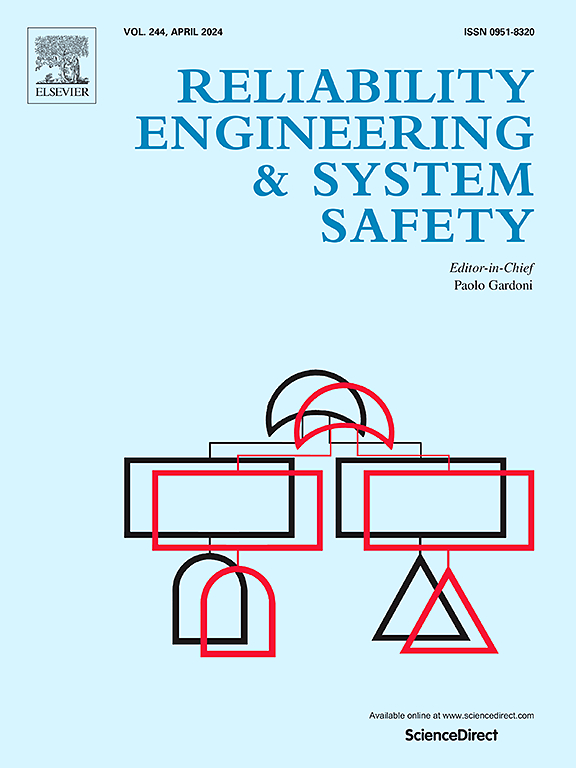Multi-source-data-driven microgrids reliability analysis via power supply chain using deep learning
IF 9.4
1区 工程技术
Q1 ENGINEERING, INDUSTRIAL
引用次数: 0
Abstract
Microgrid reliability is the ability to maintain a stable energy supply in a variable environment. However, such an environment (wind direction, temperature, humidity, pressure, and wind speed) renders the power supply with randomness, intermittency, and volatility. To ensure power stability in variable environments, a data-driven microgrid (DDMG) reliability analysis method is proposed based on the power supply chain (PSC) model, which fully considers the data-dependent output power. Firstly, a convolutional neural network-support vector machine (CNN-SVM) model is developed to effectively fuse multi-source data features. Secondly, a temporal convolutional network-bidirectional gated recurrent unit (TCN-BiGRU) approach is introduced to capture temporal dependencies to predict equipment states. The above two deep learning models provide accurate input values for reliability assessment. Then, a reliability assessment model is established based on the PSC model, complemented by an importance-measure-based reliability improvement strategy. Finally, the feasibility of methodology is validated with a case. The results show that compared with the traditional methods, the classification accuracy of CNN-SVM is up to 98.9747 %, the R2 of TCN-BiGRU is up to 96.1962 %, and the recovered ranking based on the importance measure markedly and stably improves the reliability, which would guide microgrid reliability design.
基于深度学习的电力供应链多源数据驱动微电网可靠性分析
微电网的可靠性是指在多变的环境中保持稳定能源供应的能力。但是这样的环境(风向、温度、湿度、压力、风速)使得供电具有随机性、间歇性和波动性。为保证可变环境下的电力稳定性,提出了一种基于电力供应链模型的数据驱动微电网(DDMG)可靠性分析方法,该方法充分考虑了输出功率的数据依赖性。首先,建立卷积神经网络支持向量机(CNN-SVM)模型,有效融合多源数据特征;其次,引入时序卷积网络双向门控循环单元(TCN-BiGRU)方法来捕获时序依赖关系以预测设备状态。以上两种深度学习模型为可靠性评估提供了准确的输入值。然后,在PSC模型的基础上建立了可靠性评估模型,并辅以基于重要度测度的可靠性改进策略。最后,通过实例验证了方法的可行性。结果表明,与传统方法相比,CNN-SVM的分类准确率可达98.9747%,TCN-BiGRU的分类R2可达96.1962 %,基于重要性测度的恢复排序显著稳定地提高了可靠性,对微网可靠性设计具有指导意义。
本文章由计算机程序翻译,如有差异,请以英文原文为准。
求助全文
约1分钟内获得全文
求助全文
来源期刊

Reliability Engineering & System Safety
管理科学-工程:工业
CiteScore
15.20
自引率
39.50%
发文量
621
审稿时长
67 days
期刊介绍:
Elsevier publishes Reliability Engineering & System Safety in association with the European Safety and Reliability Association and the Safety Engineering and Risk Analysis Division. The international journal is devoted to developing and applying methods to enhance the safety and reliability of complex technological systems, like nuclear power plants, chemical plants, hazardous waste facilities, space systems, offshore and maritime systems, transportation systems, constructed infrastructure, and manufacturing plants. The journal normally publishes only articles that involve the analysis of substantive problems related to the reliability of complex systems or present techniques and/or theoretical results that have a discernable relationship to the solution of such problems. An important aim is to balance academic material and practical applications.
 求助内容:
求助内容: 应助结果提醒方式:
应助结果提醒方式:


